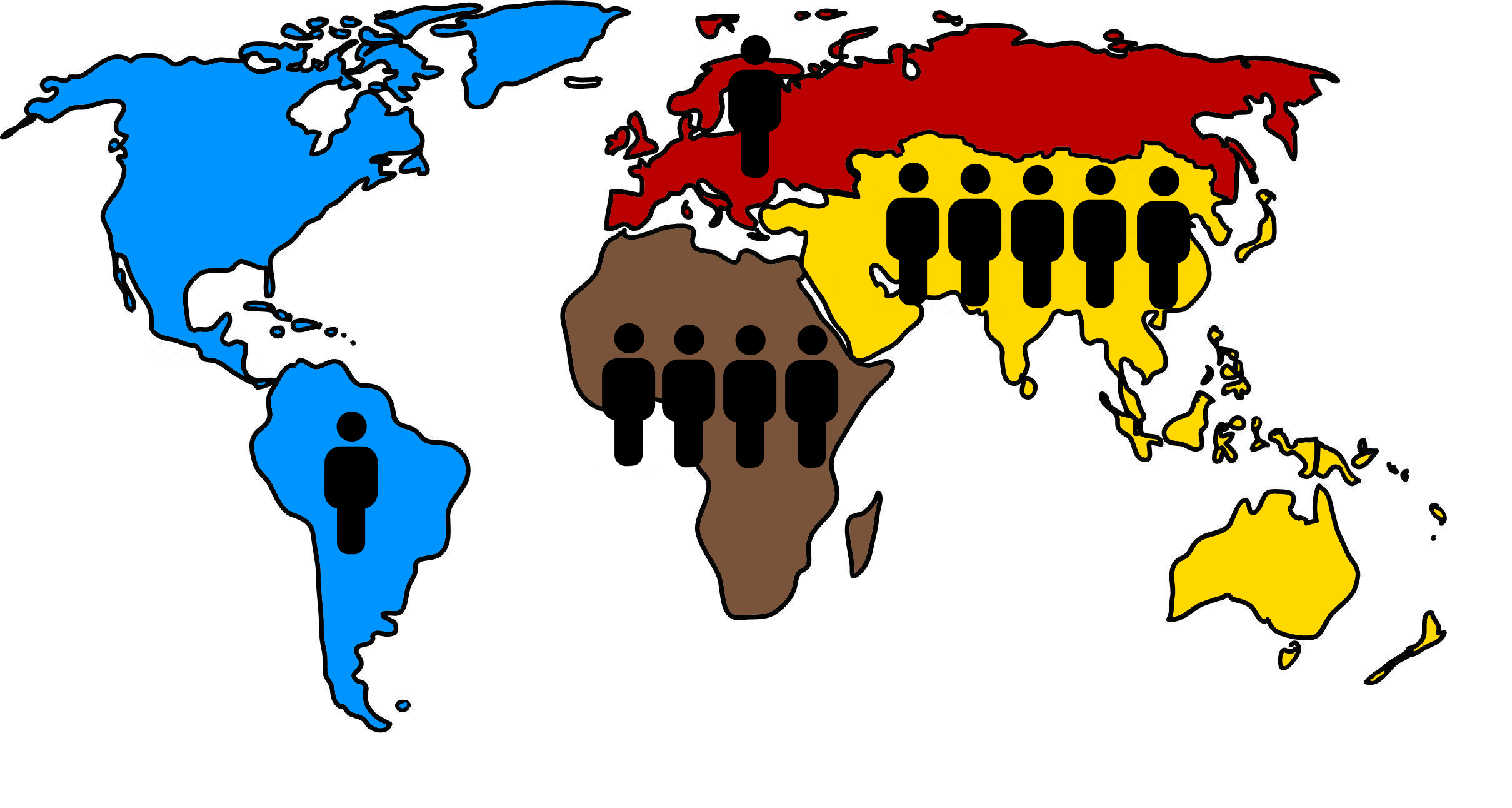Do you know the World's PIN Code?
In 2011 the world's population passed the 7 billion mark. Which map best shows where they live? (Each figure represents 1 billion people.) What do you think? A, B or C?

Click the "Read more" link below to check your answer and learn the world's PIN code.
The correct answer is Map A. How did you do? If you did not choose correctly, you are in the majority. 70% of people pick the wrong map (reference: Hans Rosling, Factfulness, 136).
One easy way to remember the distribution of the world’s population is to think of it as a four-digit PIN code: 1-1-1-4. 1 billion people live in the Americas, 1 billion people in Europe, 1 billion people in Africa and 4 billion people in Asia. So today the world's PIN code is 1-1-1-4.
Now, let us consider another question. What may be the distribution of the world’s population in the year 2100?
According to the United Nations population forecast for the year 2100, (reference) there will be about the same number of people in the Americas and Europe. Africa will add three billion people and Asia will add another billion. That makes 11 billion people. So, in 2100, the world's PIN code may well be 1-1-4-5. If so, more than 80% of the world’s population will reside in Africa and Asia.

The Projected Distribution of the World's Population in 2100
With 300% population growth projected for Africa and 25% for Asia, Africa's population will rival Asia's. One distinct difference between Africa and Asia is that in 2018, Africa, for the first time, had the most Christians compared to any other continent - 631 million (reference). Asia, on the other hand, has the lowest percentage of Christians - just 9%. Indeed, not all of these Christians in Africa are evangelicals or born again. But more people identify with Jesus Christ in Africa than any other continent. This presents a great opportunity. What happens in Africa is critical to the future of global Christianity (reference).
What are the implications of these demographic trends for world missions? In particular what may be implications for church planting, leadership, discipleship, ministry to children and youth, mission mobilization, and Business for Transformation initiatives? Share your thoughts in the comment section below.
- Log in to post comments
